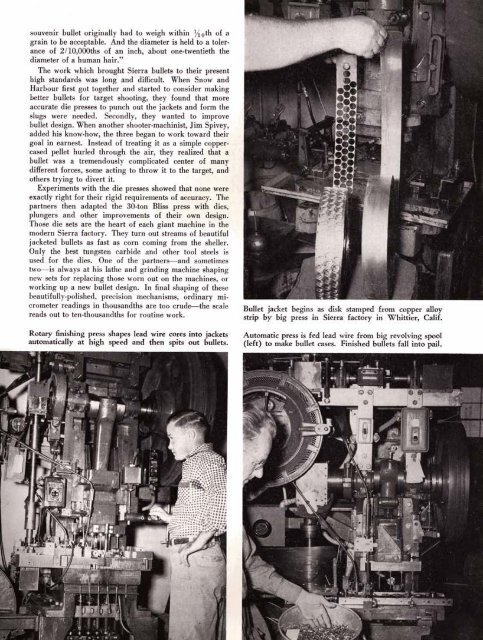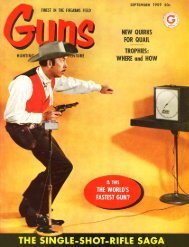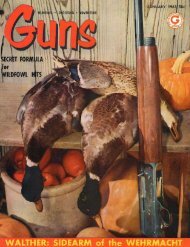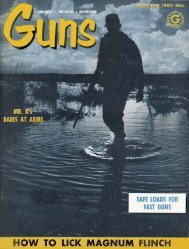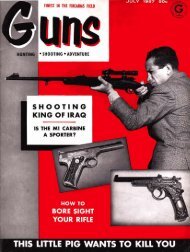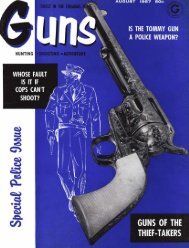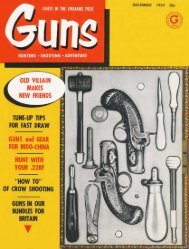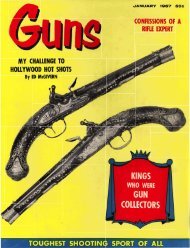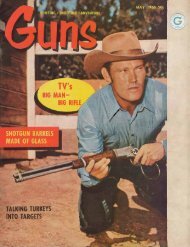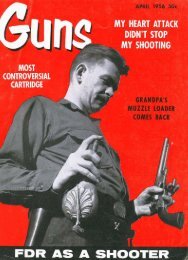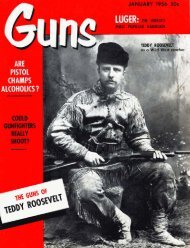Create successful ePaper yourself
Turn your PDF publications into a flip-book with our unique Google optimized e-Paper software.
souvenir bullet originally had to weigh within %& of a<br />
grain to be acceptable. And the diameter is held to a tolerance<br />
of 2/lO,OOOths of an inch, about one-twentieth the<br />
diameter of a human hair."<br />
The work which brought Sierra bullets to their present<br />
high standards was long and difficult. When Snow and<br />
Harbour first got together and started to consider making<br />
better bullets for target shooting, they found that more<br />
accurate die presses to punch out the jackets and form the<br />
slugs were needed. Secondly, they wanted to improve<br />
bullet design. When another shooter-machinist, Jim Spivey,<br />
added his know-how, the three began to work toward their<br />
goal in earnest. Instead of treating it as a simple coppel<br />
cased pellet hurled through the air, they realized that a'<<br />
bullet was a tremendously complicated center of many '<br />
I<br />
different forces, some acting to throw it to the target, and -,<br />
others trying to divert it.<br />
Experiments with the die presses showed that none wer? j<br />
exactly right for their rigid requirements ofaccuracy. The , ,<br />
partners then adapted the 30-ton BKss press with diq,'.<br />
plungers and other improvements of their own design.<br />
Those die sets are the heart of each riant machine in the<br />
.a<br />
modern Sierra factory. They turn out streams of beautiful<br />
jacketed bullets as fast as corn coming from the sheller.<br />
Only the best tungsten carbide and other tool steels is<br />
used for the dies. One of the partners~and sometimes<br />
two-is always at his lathe and grinding machine shaping<br />
new sets for replacing those worn out on the machines, or<br />
working up a new bullet design. In final shaping of these<br />
beautif~ll~-~olished, precision mechanisms, ordinary micrometer<br />
readings in thousandths are too crude-the<br />
reads out to ten-thousandths for routine work.<br />
scale Bullet jacket begins as disk stamped from copper alloy<br />
strip by big press in Sierra factory in Whittier, Calif.<br />
Rotary finishing press shapes lead wire cores into jackets<br />
automatically at high speed and then spits out bullets.<br />
Automatic press is fed lead wire from big revolving spool<br />
(left) to make bullet cases. Finished bullets fall into pail.


